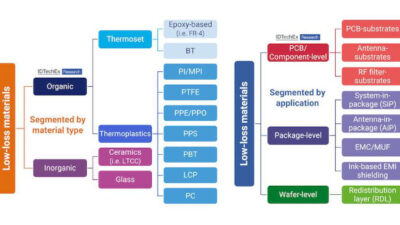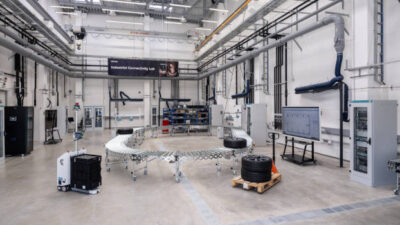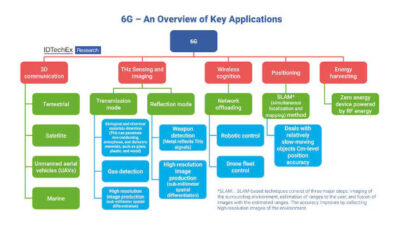A wide spectrum of industrial applications can benefit from ultra-low-power wireless sensor networks, including monitoring and control of temperature, vibration, humidity, position, tank levels, storage, robot movements, safety, and security. Also read...
There are many advantages of using ultra low power wireless sensor networks in industrial applications. These include the cost elimination of hard wiring, the enhanced flexibility in constricted or dangerous areas, ease of installation, increased safety and reduced maintenance costs of sensor deployments. However, using low-power networks presents several challenges, such as battery maintenance and reliability.A wide spectrum of industrial applications can benefit from ultra-low-power wireless sensor networks, including monitoring and control of temperature, vibrations, humidity, position, tank levels, storage, robot movements, safety and security. An ultra-low power application is an application that is able to live off just a coin cell battery, or off energy harvested from the environment through a solar cell, vibration energy harvester, or any other environmental-energy converter. Wireless in machines: Energy harvesting technology gets real
New Ways to Power Instrumentation
.) Addressing energy challenges The biggest technical challenge for self-powered, ultra-low power sensor networks is managing energy consumption without compromising range, functionality, communication speed, or standards compliance. Most of today’s “standard” wireless sensor-network solutions for industrialg applications only solve the wiring problem for industrial applications, making the networks easier to install and re-architect as needed. They do not, however, deal with power or associated maintenance issues.For example, ultra-low power wireless network solutions can address the maintenance problem that is inherent to networks with a high number of nodes and a limited battery life. A network consisting of 4,000 nodes and exhibiting an average battery life of 10 years requires, typically requires one battery change per day.Until now, existing wireless sensor networks designed to gather industrial or machine data have never been really able to provide a cost-effective solution because the true expense of wireless sensor networks has been hidden in maintenance costs. Because the majority of the sensors used are battery powered, there can be considerable labor cost associated with changing individual sensor batteries, as well as reintegrating the downed nodes after battery changes.Avoid such costs requires self-powered nodes that can run off of energy harvesting devices, or sensor networks that can be powered by a single battery whose lifetime exceeds that of the sensor, so it never needs to be changed. The resulting elimination of battery replacement simplifies maintenance and provides better ease of use and safety. Antenna diversity In addition to solving the power issue in an industrial environment, low power networks need to be very reliable. The reliability of a wireless sensor network is related to the availability or absence of a communication path between two wireless devices. The most critical challenge to reliability is wireless interference coming from other users of the same wireless frequency band. The most common interferers for IEEE 802.15.4-based devices that operate in the 2.4 GHz frequency band are Wi-Fi transceivers.Most interferers will not fully block out an IEEE 802.15.4 device, but will cause some wireless packets to get lost, regardless of the network stack. Industrial standards provide a mechanism for spreading such packet losses evenly over time, and automatic mechanisms for finding alternative channels to re-establish connections.To further increase reliability, it is possible to add antenna diversity to the wireless sensor network communication system to ensure a larger reliable range that prevents signal fading that can occur with non-line-of-sight connections between the communicating devices due to obstructions that can temporarily block transmission of radio signals, such as walls, floors, heavy machinery, pipes, scaffolding, and even mobile equipment like trucks.
Antenna diversity is the technique of adding a second antenna in a different location to avoid multipath interference. At a 2 cm wavelength in the 2.4 GHz band, only a small distance is needed. A “diversity switch” chooses the antenna with the best signal strength. Source: GreenPeak Technologies
Antenna-diversity systems use two antennas to improve the quality and reliability of a wireless link. If there is not a clear line-of-sight (LOS) between transmitter and receiver, the signal may be reflected along multiple paths before finally being received, each of these bounces can introduce phase shifts, time delays, attenuations, and even distortions that can destructively interfere with one another at the receiving antenna.Antenna diversity mitigates these multipath problems because the two antennas afford a receiver several observations of the same signal. Each antenna experiences a different interference environment. If one antenna is experiencing a deep fade, it is likely that the other has a sufficient signal. Collectively, such a system provides a robust link.For wireless sensor transceivers the dominant and probably only real standard is the IEEE 802.15.4 specification via Bluetooth and Wi-Fi. In all reported cases, Bluetooth and Wi-Fi were used in a non-standard way.In addition to the IEEE 802.15.4 standard, a number of technology suppliers have chosen to build a proprietary transceiver. The main motivation seems to be a reduction of the complexity and thus a potential lower cost point. It remains to be seen if a proprietary solution will ever reach sufficient volumes to actually reach a lower cost point. Additionally, reducing the complexity automatically goes hand in hand with sacrificing performance and thus limiting the applicability.Proprietary technologies are vulnerable for two reasons: (1) the owner of the technology controls the specification and thus also the price, and (2) the customer depends on the technology owner for upgrades and uninterrupted sourcing. Even within the boundaries of standards, technology providers discover differentiation opportunities.— Edited by C.G. Masi , senior editor Control Engineering Machine Control eNewsletter Register here and scroll down to select your choice of eNewsletters free.



